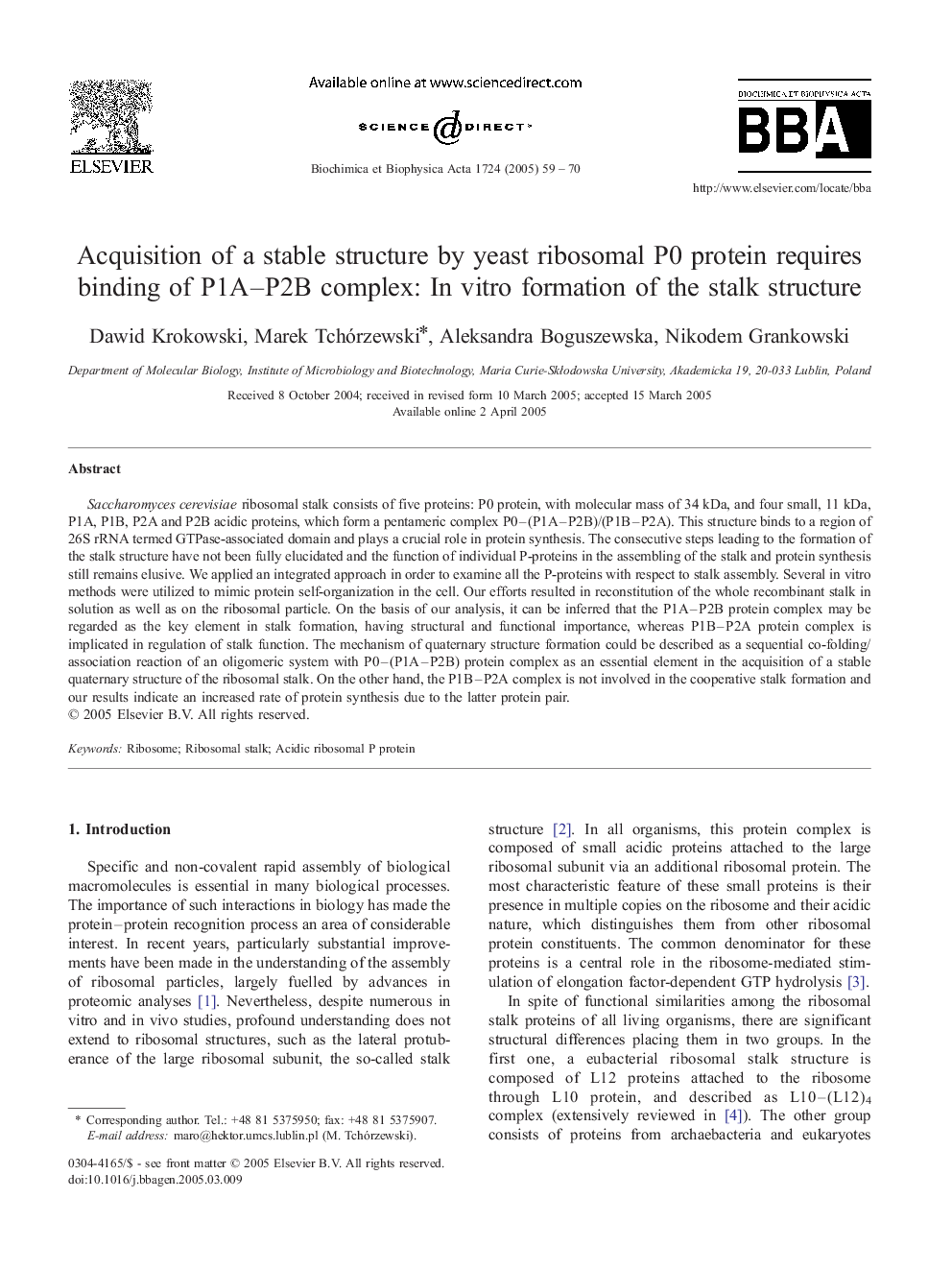| Article ID | Journal | Published Year | Pages | File Type |
|---|---|---|---|---|
| 9886095 | Biochimica et Biophysica Acta (BBA) - General Subjects | 2005 | 12 Pages |
Abstract
Saccharomyces cerevisiae ribosomal stalk consists of five proteins: P0 protein, with molecular mass of 34 kDa, and four small, 11 kDa, P1A, P1B, P2A and P2B acidic proteins, which form a pentameric complex P0-(P1A-P2B)/(P1B-P2A). This structure binds to a region of 26S rRNA termed GTPase-associated domain and plays a crucial role in protein synthesis. The consecutive steps leading to the formation of the stalk structure have not been fully elucidated and the function of individual P-proteins in the assembling of the stalk and protein synthesis still remains elusive. We applied an integrated approach in order to examine all the P-proteins with respect to stalk assembly. Several in vitro methods were utilized to mimic protein self-organization in the cell. Our efforts resulted in reconstitution of the whole recombinant stalk in solution as well as on the ribosomal particle. On the basis of our analysis, it can be inferred that the P1A-P2B protein complex may be regarded as the key element in stalk formation, having structural and functional importance, whereas P1B-P2A protein complex is implicated in regulation of stalk function. The mechanism of quaternary structure formation could be described as a sequential co-folding/association reaction of an oligomeric system with P0-(P1A-P2B) protein complex as an essential element in the acquisition of a stable quaternary structure of the ribosomal stalk. On the other hand, the P1B-P2A complex is not involved in the cooperative stalk formation and our results indicate an increased rate of protein synthesis due to the latter protein pair.
Keywords
Related Topics
Life Sciences
Biochemistry, Genetics and Molecular Biology
Biochemistry
Authors
Dawid Krokowski, Marek Tchórzewski, Aleksandra Boguszewska, Nikodem Grankowski,
